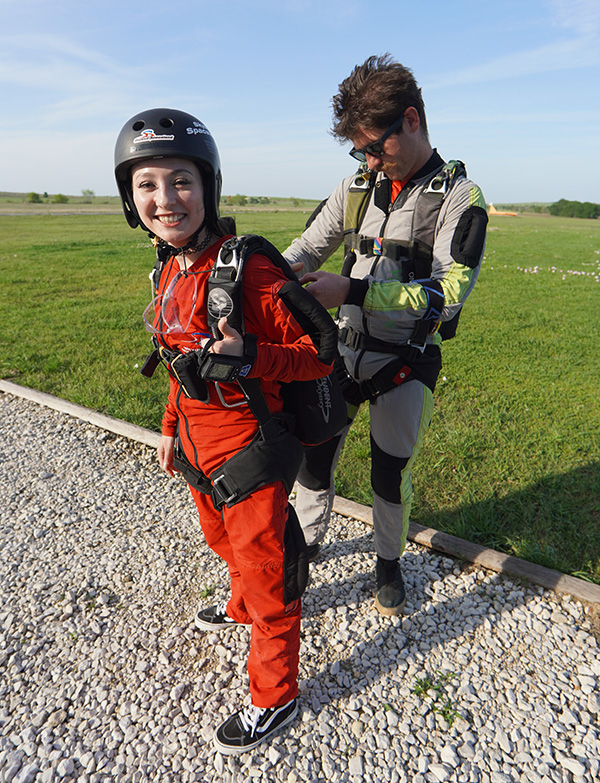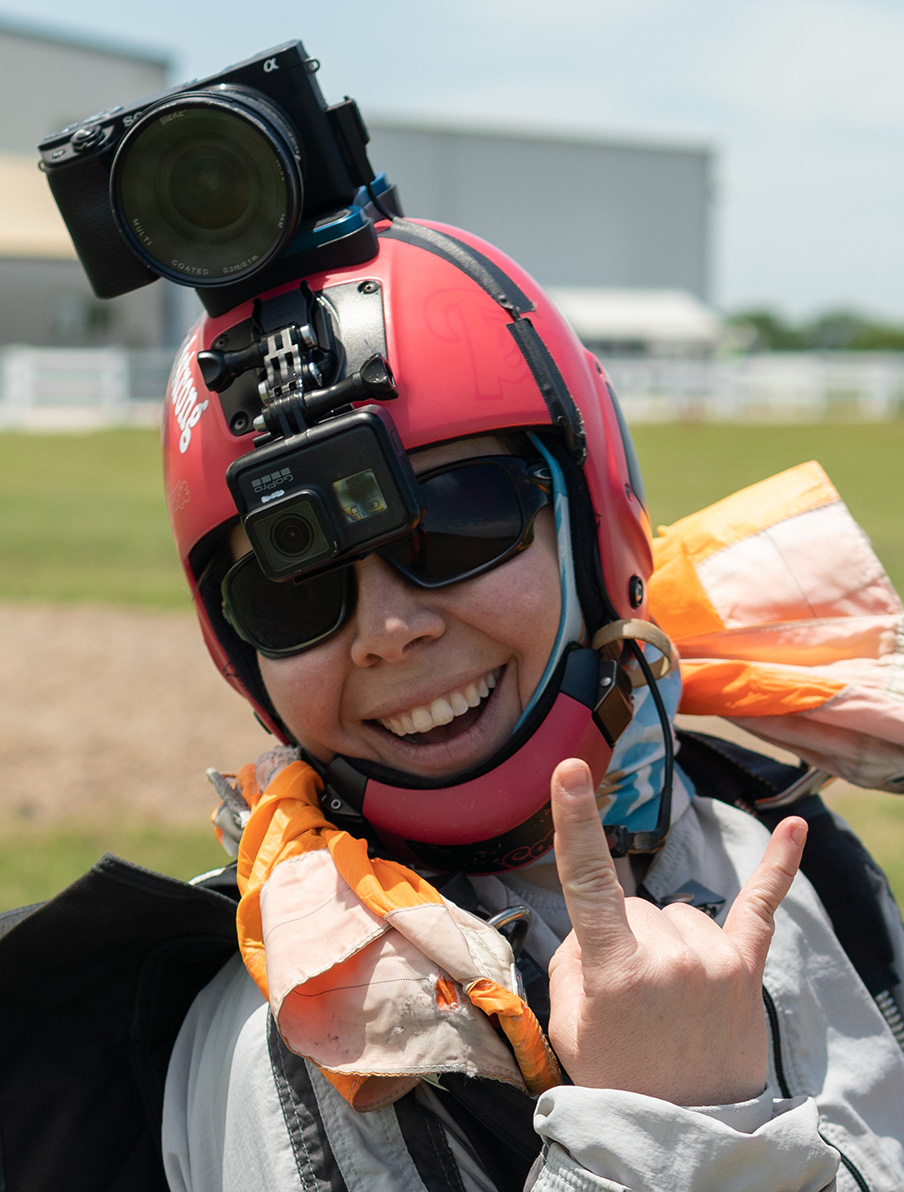Safety Culture Starts with YOU
Recent News
Thursday, August 14, 2025
Above: Photo by Matt Jackson.
You’re in the plane riding up to altitude. It’s cramped, it’s loud and someone across from you says, “Oh no, I forgot my altimeter!” Maybe they laugh, someone hands them a spare and the load just goes on like nothing happened. But here’s the thing: No one caught it. Not them, not you, not the person doing their gear check (if they even got one).
That moment might seem relatively small, but it reflects something much bigger. Skydiving safety isn’t just about gear checks or regulations; it’s also about your mindset, habits and the culture everyone builds together. Safety culture is how people think, talk and act regarding safety ... even when no one is watching. It shows up in how you treat gear checks, landing patterns, weather decisions and how willing you are to speak up when something feels off.
A Living Organism
Each drop zone develops its own unique culture, which continually evolves over time. Think of culture as a living organism, much like a garden. A garden requires nurturing, attention and the right environment to thrive, and so does culture. If you ignore a garden, weeds take over. If you don’t water it, it dries up and dies. The same goes for safety culture; you need to nurture and tend it for it to thrive. Every time you make good decisions and set a good example, you nurture a healthy safety culture. Every time you flaunt the rules or take unnecessary risks, that safety culture starts to wither. You can’t plant good habits once and expect them to grow on their own; they need reinforcement, protection and sometimes pruning. The point is: Safety culture doesn’t grow by accident; it grows by design.
The rules don’t shape safety culture; people do. What you tolerate, reward, laugh off and call out ... all of it sends a message. Every choice you make, especially in front of others, has an influence. Attitudes spread quickly around the drop zone. When one person wings it, others follow. When someone sets a good example, others do too. You’ve probably seen this in action before. Maybe when you were in the loading area, you saw someone get a gear check, so you decided to ask for one too. Or perhaps you skipped your own gear check because no one else seemed to be doing one. That’s social influence in action, and it can work both for and against safety.
 Photo by Rosy Booker.
Photo by Rosy Booker.The choices you make influence others, but what happens when risky choices become the norm? When unsafe habits go unchallenged, or worse, get normalized, they quietly become part of the culture. That’s where at-risk behaviors come in. Put simply, an at-risk behavior is any action or behavior that increases the chance of an accident. These behaviors might include forgoing an adequate canopy-control check, not regularly practicing emergency procedures or jumping in inappropriate weather conditions or with poorly maintained gear. Most of the time people aren’t being intentionally reckless, their choices come from habit, pressure and overconfidence.
At-Risk Behaviors
People often engage in at-risk behaviors because they see an immediate benefit that feels more important than the potential risk. The reward is tangible (saving time, avoiding discomfort, looking cool) while the danger feels distant or unlikely. Here are some common examples:
• Getting away with it: If nothing bad happens the first few times, it starts to feel safe, even when it isn’t.
• Saving time: Rushing a gear check or skipping a dirt dive to make the next load.
• Less effort: Pulling lower to stretch freefall instead of prioritizing a safe deployment altitude.
• Looking skilled or brave: Attempting high-speed landings to impress others, even without the experience to back it up.
• Avoiding embarrassment: Not asking questions or admitting uncertainty, even when unsure.
• Peer pressure: Joining a skydive that’s outside your ability because “everyone else is doing it.”
But there’s another critical layer: What happens when no one says anything?
When you stay silent about unsafe behavior, especially when you know better, you unintentionally signal that it’s acceptable. This is especially common when experienced jumpers assume the person taking the risk “should already know better.” The result? The risky jumper assumes their action was fine, and now they’re more likely to repeat it.
Let’s break down the cycle. The risky jumper feels rewarded, they took a risk, nothing bad happened and now they feel more confident repeating it. The experienced jumper avoids discomfort, because speaking up can be challenging and staying quiet can feel easier in the moment. The bad habits spread ... others see the behavior and start copying it, thinking it’s both acceptable and normal. The problem? Every time someone gets away with a risky move, it reinforces the idea that the risk was never real, until one day, it is.
Say Something
One of the most powerful ways to improve safety culture is also one of the simplest: say something. Speaking up respectfully and consistently can disrupt risky patterns before they become normalized. You don’t need to lecture, scold or embarrass anyone. Just asking, “Hey, did you mean to skip your gear check?” can be enough to snap someone out of autopilot.
But it’s not just about calling out unsafe choices; reinforcing good habits is just as important. When you thank someone for checking the spot or point out how well they flew their pattern, you send a clear message: We value safety here.
Those small interactions add up. They create a feedback loop that shapes behavior and reinforces norms. Over time, that loop becomes part of the culture. And that’s how culture shifts: not with top-down rules, but with peer-to-peer actions.
Everyone on the drop zone shapes the culture, not just management and staff. Sometimes, it’s just about being the person who does the right thing without being asked and setting a good example. Whether you’ve just earned your A license or you’ve been jumping for decades, your actions and your voice matter. Every interaction, every decision, every time you choose to speak up (or stay silent), you’re shaping the environment we all share.
That jumper on the plane who forgot their altimeter? It wasn’t just their mistake; it was a moment everyone missed. Because safety isn’t just personal; it’s collective. It depends on our awareness, the behaviors we reinforce (and the ones we let slide) and how willing we are to look out for each other. Want to be part of the movement? Next time you’re at the drop zone, try one of these: Set an example with how you approach safety (even if you don’t think anyone is watching). Give a compliment when you see someone make a safe choice. Ask a question if something doesn’t sit right with you.
It’s the little things that add up.
Because in the end, the culture we build together is the one we all jump in.
 About the Author
About the Author
Rosy Booker, D-34461, is the newest member of the USPA Communications Department. She is a USPA AFF Instructor and Coach Examiner.